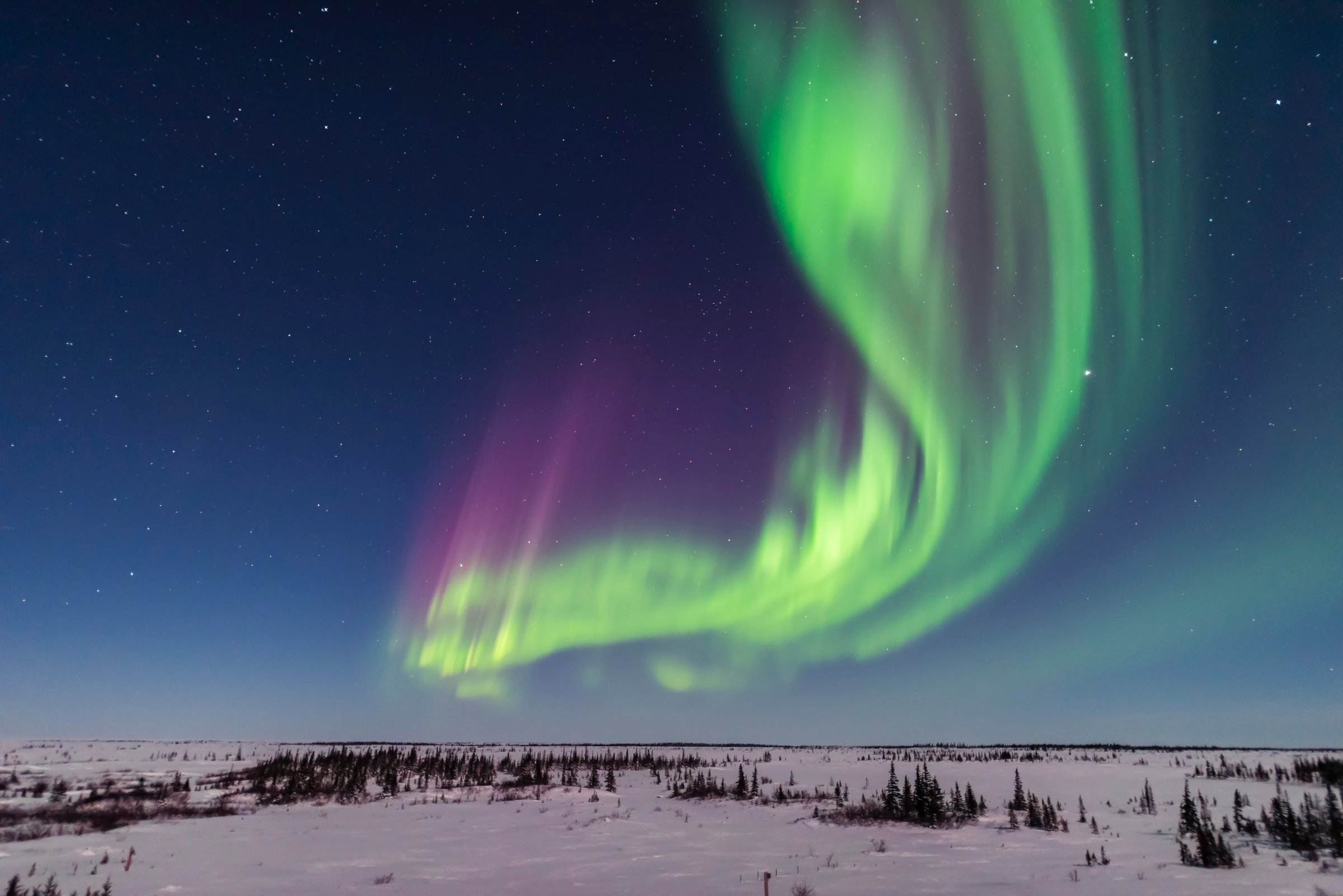
A solar storm this week will heighten the Earth’s auroras, making the stunning northern lights visible to the northern-most parts of the United States.
Lasting from Wednesday through Thursday, the geomagnetic storm will also impact the Earth’s magnetosphere — or magnetic field, which is impacted by changing solar winds. That means the storm could cause minor “power grid fluctuations” and have small impacts on orbiting satellites, according to the Space Weather Prediction Center from the National Oceanic and Atmospheric Administration.
It appears this upcoming event will allow residents in U.S. to catch a rare glimpse of the northern lights. The center says residents in the northern tier of the U.S., including Michigan and Maine, may be able to see the auroras.
According to a graph from the space center, it also appears states like North Dakota, South Dakota, Minnesota and Wisconsin could also see the lights as a result of the storm. In addition, the northern-most part of Ireland, Norway, and parts of Sweden and Finland can see the lights.
The minor storm is classified as G1, which is the lowest on the scale of intensity from the Space Weather Prediction Center. These kinds of storms occur about 2,000 times over 11 years, the center says, which amounts to more than 180 times per year. The highest level of this kind of storm is a G5, which would involve a “high frequency radio blackout” on the sunlit side of the world for several hours, according to the center. Those come once every 11 years. The largest of these storms come as a result of the release of plasma from the Sun’s corona, called coronal mass ejections, that arrive at Earth and disturb its magnetic fields.
More Must-Reads From TIME
- The 100 Most Influential People of 2024
- The Revolution of Yulia Navalnaya
- 6 Compliments That Land Every Time
- What's the Deal With the Bitcoin Halving?
- If You're Dating Right Now , You're Brave: Column
- The AI That Could Heal a Divided Internet
- Fallout Is a Brilliant Model for the Future of Video Game Adaptations
- Want Weekly Recs on What to Watch, Read, and More? Sign Up for Worth Your Time
Contact us at letters@time.com